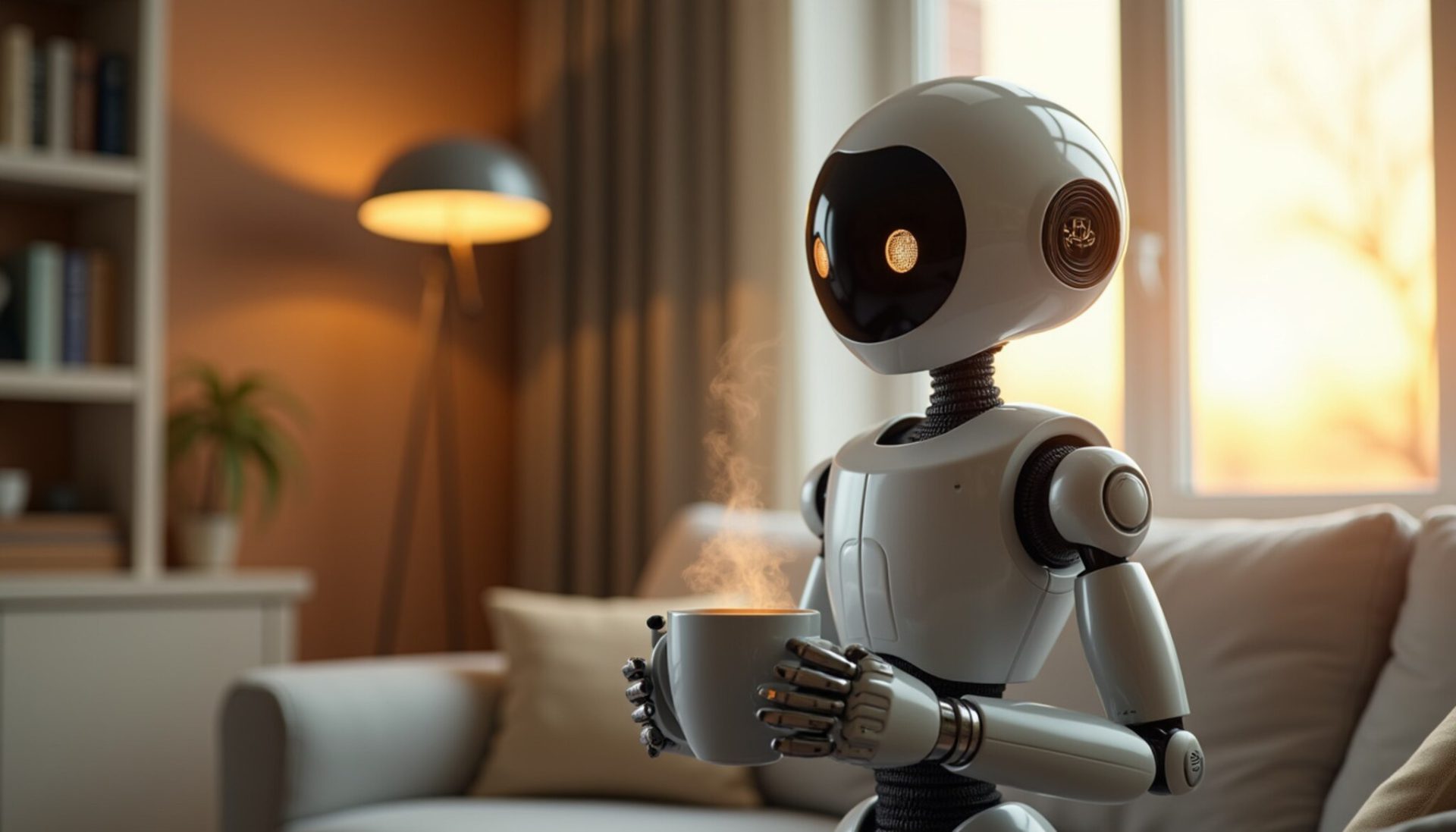Imagine waking up to the soft sounds of shuffling footsteps, and instead of a family member, a humanoid robot stands before you with a cup of coffee. The reality is very different; home humanoid robots are bound to transform our lives for the better, starting with labor saving devices. As of April 2025, world tech companies are in a race to turn these machines into a household reality, integrating technology and convenience into our lives. Let us look deeper into this emerging trend, its implications, and its consequences.
A Robo Butler Ready to Serve
One of the companies leading the charge is 1X, a Silicon Valley startup driven by Norwegian engineer Bernt Børnich. Their robot, Neo, is not just another smart gadget but a work in progress on the path to becoming a servant robot. In a New York Times feature, Neo was photographed opening doors and serving bottled water in a Silicon Valley home. Børnich said that the company’s plan is to have Neo in over 100 homes for real-life data collection by the end of the year. The objective, as he explained, is to make these robots learn to manage the myriad forms of domestic disorder—spilled cereal, scattered toys and everything else.
“I have a firm grip,” Neo reportedly said during a handshake demo, showcasing its mix of strength and personality. It’s this combination of practicality and allure that’s sparking interest. Imagine a robot that doesn’t just vacuum but also holds a conversation with you or babysits the children. That’s the vision propelling this surge.
What’s causing the influx? The timing is coupled with technology.
But why are humanoid robots suddenly making an appearance in households? The reason is a favorable combination of new developments. There has been a dramatic advance in artificial intelligence, enabling robots to comprehend voice commands and navigate chaotic environments filled with obstacles. Additionally, the cost of hardware has decreased. According to Goldman Sachs, the cost of building a robot has dropped by 40% in the past year, now sitting at a cost of $30,000-$150,000 per unit. Although this is still considered expensive, it indicates progress in price accessibility.
This phenomenon is also being driven by real-world demands. Countries such as Japan and regions in Europe have rapidly increasing elderly populations that desire companionship and are capable of performing basic tasks as well as monitoring their health. Furthermore, there has been a significant gap in available workers in caregiving roles as well as logistics, making the need for robots an attractive solution. Musk’s futuristic perspective suggests more than one billion humanoid robots will exist on Earth by the 2040s, beginning with factory settings and gradually shifting to residential areas. From Labs to Lawns: Real-world Robots at Work
Neo is not the only one. Boston Dynamics’ Atlas is known for dancing, but also features a bipedal robot called Digit, who assists in Amazon’s warehouses and operates on Tesla’s self-driving vehicles. Although these machines strived to match the movements of humans such as walking, dancing and lifting, a more innovative purpose is on the verge of being achieved—robot’s functionality at home.
In August 2024, 1X announced a prototype for household use called NEO Beta. Similarly, Softbank Robotics has integrated Pepper into the healthcare and educational fields. Imagine having Digit mow your lawn or Optimus fold the laundry. These are not far away fantasies—pilot programs are currently being implemented to assess the interactions of humans and robots in day-to-day scenarios.
The other side: Issues to be encountered
It goes without saying that everything comes with its own limitations. One particular aspect that robots struggle with is battery life; most can only last a few hours. Although slowly getting better, performing tasks such as cooking a meal or soothing a crying toddler requires a level of delicateness that is difficult to program. Another issue lies with costs—robotic aid can be perceived as cheaper than using human assistance, at $10 a day, but is still considered to be out of reach for most people.
Then there is the human factor. Who would you trust more? A butler made of flesh or metal? To some, a robot servant could feel creepy, as if lifted from a thrilling science fiction flick; to others, it is more of a lifeline. It will all come down to balancing comfort and capability.
What’s Next for Home Robots?
As far as predictions go, 2025 could be a landmark year. Industry experts like Artem Sokolov from Humanoid II predict an increase in collaboration between AI leaders, such as Nvidia and OpenAI, and robotics companies, which will accelerate development. Moreover, Goldman Sachs estimates the market will reach $38 billion by 2035, with home usage rising rapidly after industrial implementation. Imagine a future where your robot not only cleans but brews coffee before you even have to ask.
For now, we are only witnessing the beginnings of an invasion. Businesses are still in the process of testing, learning, and refining. These machines are set to become more affordable and intelligent, and will therefore likely be as commons as dishwashers. Until they reach that point, however, we get to explore a new realm where technology and humanity intertwine.
So tell me, are you prepared to leave this question open and welcome a Hawkins?
